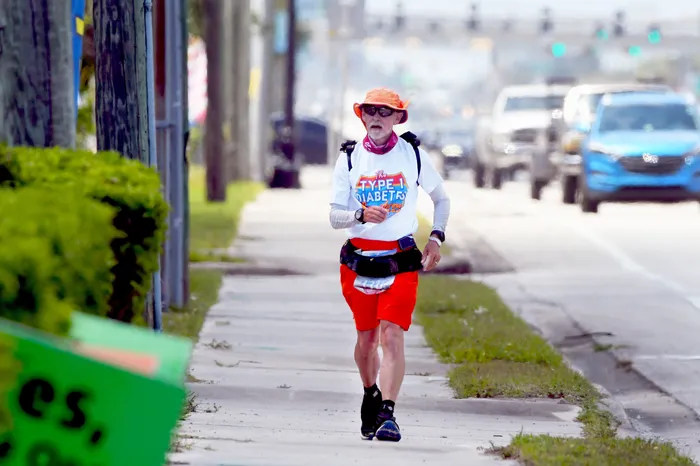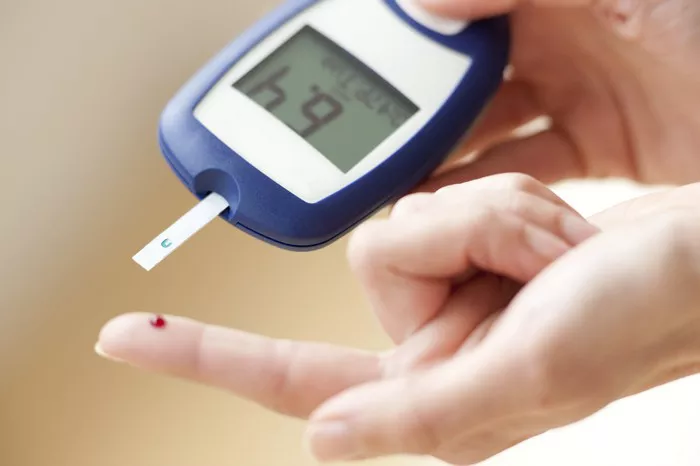Hypoglycemia, a condition characterized by abnormally low blood glucose levels, is a common concern for individuals with diabetes, but it can also affect those without the condition. One potential trigger of hypoglycemia that warrants closer examination is excessive physical exercise. This article explores the relationship between intense physical activity and hypoglycemia, addressing the underlying mechanisms, risk factors, symptoms, prevention strategies, and management techniques.
Understanding Hypoglycemia
Hypoglycemia occurs when blood glucose levels drop below the normal range, typically defined as below 70 mg/dL (3.9 mmol/L). It can result in a range of symptoms, from mild discomfort to severe medical emergencies. Symptoms of hypoglycemia include shakiness, sweating, confusion, irritability, rapid heartbeat, and in extreme cases, seizures or loss of consciousness.
For individuals with diabetes, hypoglycemia often results from an imbalance between medication, food intake, and physical activity. However, even those without diabetes can experience hypoglycemia, particularly if they engage in prolonged or intense physical exercise without adequate nutritional support.
The Role of Glucose in Exercise
Glucose is the primary fuel source for muscles during exercise. The body stores glucose in the form of glycogen in the liver and muscles. During physical activity, these glycogen stores are broken down to provide a continuous supply of glucose to meet the increased energy demands.
The body regulates blood glucose levels through a complex interplay of hormones, including insulin, glucagon, and adrenaline. Insulin helps cells absorb glucose from the bloodstream, while glucagon and adrenaline stimulate the release of stored glucose to maintain adequate blood sugar levels.
How Exercise Affects Blood Glucose Levels
Exercise has a multifaceted impact on blood glucose levels, influenced by the type, intensity, and duration of physical activity. Generally, moderate exercise can help lower blood glucose levels by increasing insulin sensitivity and promoting glucose uptake by muscles. This effect is beneficial for managing diabetes and improving overall metabolic health.
However, prolonged or intense exercise can lead to significant fluctuations in blood glucose levels. During extended periods of physical activity, the body’s glycogen stores can become depleted. If not replenished, this depletion can result in hypoglycemia, especially if the body’s hormonal response is insufficient to maintain glucose levels.
Mechanisms of Exercise-Induced Hypoglycemia
Several mechanisms contribute to exercise-induced hypoglycemia, including:
- Increased Glucose Utilization: Intense physical activity increases the demand for glucose, which can rapidly deplete glycogen stores, particularly in the absence of adequate carbohydrate intake.
- Enhanced Insulin Sensitivity: Exercise enhances insulin sensitivity, meaning that muscles become more efficient at absorbing glucose from the bloodstream. While this is beneficial for blood glucose control, it can also increase the risk of hypoglycemia if glucose uptake outpaces glucose production and availability.
- Delayed Glucose Production: During exercise, the liver produces glucose through gluconeogenesis (the creation of glucose from non-carbohydrate sources) and glycogenolysis (the breakdown of glycogen). However, intense or prolonged exercise can temporarily impair these processes, leading to lower blood glucose levels.
- Hormonal Imbalances: Physical activity triggers the release of various hormones, including adrenaline and cortisol, which help maintain blood glucose levels. However, excessive exercise can disrupt the balance of these hormones, reducing their effectiveness in preventing hypoglycemia.
Risk Factors for Exercise-Induced Hypoglycemia
Certain factors can increase the risk of developing hypoglycemia during or after exercise. Understanding these risk factors can help individuals take preventive measures to maintain stable blood glucose levels.
- Type of Exercise: Endurance activities such as long-distance running, cycling, or swimming are more likely to cause hypoglycemia due to prolonged energy expenditure and glycogen depletion.
- Duration and Intensity: The longer and more intense the exercise, the greater the risk of hypoglycemia. High-intensity interval training (HIIT) and prolonged aerobic exercise can significantly impact blood glucose levels.
- Nutritional Status: Inadequate carbohydrate intake before, during, or after exercise can increase the likelihood of hypoglycemia. Carbohydrates are the primary fuel source for exercise, and insufficient intake can result in rapid glycogen depletion.
- Timing of Insulin or Medications: For individuals with diabetes, the timing of insulin or other glucose-lowering medications relative to exercise is crucial. Exercising during the peak action time of these medications can exacerbate the risk of hypoglycemia.
- Previous Hypoglycemic Episodes: A history of hypoglycemia can increase the risk of future episodes, as the body’s counter-regulatory response may become impaired.
Symptoms of Exercise-Induced Hypoglycemia
Recognizing the symptoms of hypoglycemia is essential for timely intervention. The symptoms can vary in severity and may include:
- Mild Symptoms: Shakiness, sweating, hunger, dizziness, palpitations, and anxiety.
- Moderate Symptoms: Headache, irritability, confusion, difficulty concentrating, and blurred vision.
- Severe Symptoms: Seizures, loss of consciousness, and in extreme cases, coma.
Preventing Exercise-Induced Hypoglycemia
Prevention is key to managing exercise-induced hypoglycemia. The following strategies can help reduce the risk:
- Monitor Blood Glucose Levels: Regular monitoring of blood glucose levels before, during, and after exercise can help detect early signs of hypoglycemia. Continuous glucose monitors (CGMs) can provide real-time data and trends.
- Carbohydrate Intake: Consuming carbohydrates before, during, and after exercise can help maintain stable blood glucose levels. The amount and timing of carbohydrate intake should be tailored to the type and duration of exercise.
- Adjust Medication: For individuals with diabetes, adjusting insulin or other glucose-lowering medications in consultation with a healthcare provider can help prevent hypoglycemia. This may involve reducing the dose or timing of medication relative to exercise.
- Gradual Training: Gradually increasing the intensity and duration of exercise can help the body adapt to the increased energy demands and reduce the risk of hypoglycemia.
- Hydration: Staying hydrated is important for overall health and can help maintain stable blood glucose levels during exercise.
- Education and Awareness: Educating individuals about the signs and symptoms of hypoglycemia and the importance of carrying fast-acting carbohydrates, such as glucose tablets or juice, can facilitate prompt treatment.
Managing Exercise-Induced Hypoglycemia
Despite preventive measures, hypoglycemia can still occur. Knowing how to manage it effectively is crucial for safety and health.
- Immediate Treatment: If hypoglycemia is suspected, consuming 15-20 grams of fast-acting carbohydrates (e.g., glucose tablets, fruit juice, regular soda) can help quickly raise blood glucose levels. Recheck blood glucose after 15 minutes and repeat if necessary.
- Follow-Up Nutrition: After initial treatment, consuming a snack or meal containing complex carbohydrates and protein can help maintain blood glucose levels and prevent recurrent hypoglycemia.
- Rest and Recovery: Taking a break from exercise and resting can help stabilize blood glucose levels and allow the body to recover.
- Medical Assistance: For severe hypoglycemia or if symptoms do not improve with initial treatment, seek medical assistance immediately. In some cases, glucagon injections may be required to raise blood glucose levels.
Case Studies and Real-World Examples
Examining real-world examples can provide valuable insights into the practical aspects of managing exercise-induced hypoglycemia.
Case Study 1: Marathon Runner with Type 1 Diabetes
John, a 35-year-old marathon runner with type 1 diabetes, experienced frequent hypoglycemia during long training runs. Despite consuming carbohydrates before and during exercise, his blood glucose levels often dropped significantly.
After consulting with his healthcare provider, John made several adjustments:
- He started using a continuous glucose monitor (CGM) to track his blood glucose levels in real-time.
- He adjusted his insulin dosage before long runs, reducing the bolus dose by 50%.
- He increased his carbohydrate intake during runs, opting for energy gels every 30 minutes.
These changes helped John maintain stable blood glucose levels, allowing him to complete his marathon without experiencing hypoglycemia.
Case Study 2: Recreational Cyclist without Diabetes
Sarah, a 28-year-old recreational cyclist without diabetes, began training for a century ride (100 miles). During her long rides, she occasionally felt lightheaded and shaky, symptoms indicative of hypoglycemia.
To address this, Sarah implemented several strategies:
- She ensured she consumed a carbohydrate-rich meal before long rides.
- She carried energy bars and sports drinks to consume at regular intervals during rides.
- She paid attention to early signs of hypoglycemia and took immediate action to consume fast-acting carbohydrates.
These measures helped Sarah complete her century ride without experiencing significant hypoglycemia.
Research and Future Directions
Ongoing research continues to explore the relationship between exercise and hypoglycemia, particularly in individuals with diabetes. Areas of interest include:
- Advanced Monitoring Technologies: The development of more accurate and user-friendly continuous glucose monitors (CGMs) and insulin pumps can help individuals better manage their blood glucose levels during exercise.
- Personalized Exercise Programs: Research into personalized exercise programs that consider an individual’s unique metabolic response to physical activity can help optimize blood glucose control.
- Nutritional Interventions: Studies on the impact of different types and timing of nutritional interventions on blood glucose levels during exercise can provide more specific guidelines for preventing hypoglycemia.
- Hormonal Responses: Understanding the role of hormonal responses in exercise-induced hypoglycemia can lead to improved prevention and treatment strategies.
Conclusion
While exercise is a cornerstone of a healthy lifestyle, excessive physical activity can increase the risk of hypoglycemia, particularly for individuals with diabetes. Understanding the mechanisms, risk factors, and symptoms of exercise-induced hypoglycemia is crucial for prevention and management.
By monitoring blood glucose levels, adjusting carbohydrate intake, and tailoring medication or insulin regimens, individuals can minimize the risk of hypoglycemia and enjoy the benefits of physical exercise. Ongoing research and advancements in technology continue to enhance our understanding and ability to manage exercise-induced hypoglycemia, paving the way for safer and more effective exercise routines for all.
Related topics:
Does Stress Cause Hypoglycemia?


























